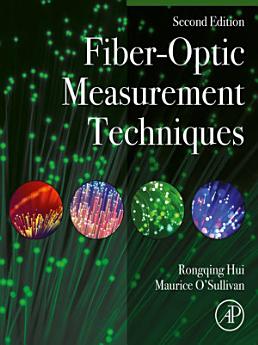Fiber-Optic Measurement Techniques: Edition 2
Nov 2022 · Academic Press
Ebook
846
Pages
family_home
Eligible
info
reportRatings and reviews aren’t verified Learn More
About this ebook
Fiber Optic Measurement Techniques is an indispensable collection of key optical measurement techniques essential for developing and characterizing today's photonic devices and fiber optic systems. The book gives comprehensive and systematic descriptions of various fiber optic measurement methods with the emphasis on the understanding of optoelectronic signal processing methodologies, helping the reader to weigh up the pros and cons of each technique and establish their suitability for the task at hand. Carefully balancing descriptions of principle, operations and optoelectronic circuit implementation, this indispensable resource will enable the engineer to: - Understand the implications of various measurement results and system performance qualifications - Characterize modern optical systems and devices - Select optical devices and subsystems in optical network design and implementation - Design innovative instrumentations for fiber optic systems The 2nd edition of this successful reference has been extensively updated (with 150 new pages) to reflect the advances in the field since publication in 2008 and includes: - A new chapter on fiber-based optical sensors and spectroscopy techniques - A new chapter on measurement uncertainty and error analysis Fiber Optic Measurement Techniques brings together in one volume the fundamental principles with the latest techniques, making it a complete resource for the optical and communications engineer developing future optical devices and fiber optic systems. - The only book to combine explanations of the basic principles with latest techniques to enable the engineer to develop photonic systems of the future - Careful and systematic presentation of measurement methods to help engineers to choose the most appropriate for their application - The latest methods covered, such as real-time optical monitoring and phase coded systems and subsystems, making this the most up-to-date guide to fiber optic measurement
About the author
Rongqing Hui is a professor of Electrical Engineering and Computer Science at the University of Kansas, Lawrence, United States. His research interests are in lightwave communication systems and subsystems, photonic devices, optical instrumentation, and photonic sensors.Maurice O'Sullivan has engineered the physical layer of optical transmission for more than 30 years, at first in the optical cable business, developing factory-tailored metrology for optical fiber, but, mainly, in the optical transmission business developing, modeling and verifying physical layer designs and performance of Nortel's (now Ciena's) line and highest rate transmission product including the first commercial 10 Gb/s system, several commercial terrestrial line systems, the first commercial DSP assisted electric field modulation transceiver with complete electronic compensation for optical dispersion and the first commercial coherent 40Gb/s and 100Gb/s transceivers. Now with Ciena, Maurice is engaged in the design of successive generations of flexible high capacity multi-rate coherent transceivers including 50G/100G/200G, 100G/.../400G, and 200G/.../800G products. Maurice is a Ciena Fellow with more than 45 patents and holds a Ph.D. in physics (high resolution spectroscopy) from the University of Toronto.
Rate this ebook
Tell us what you think.
Reading information
Smartphones and tablets
Install the Google Play Books app for Android and iPad/iPhone. It syncs automatically with your account and allows you to read online or offline wherever you are.
Laptops and computers
You can listen to audiobooks purchased on Google Play using your computer's web browser.
eReaders and other devices
To read on e-ink devices like Kobo eReaders, you'll need to download a file and transfer it to your device. Follow the detailed Help Center instructions to transfer the files to supported eReaders.





